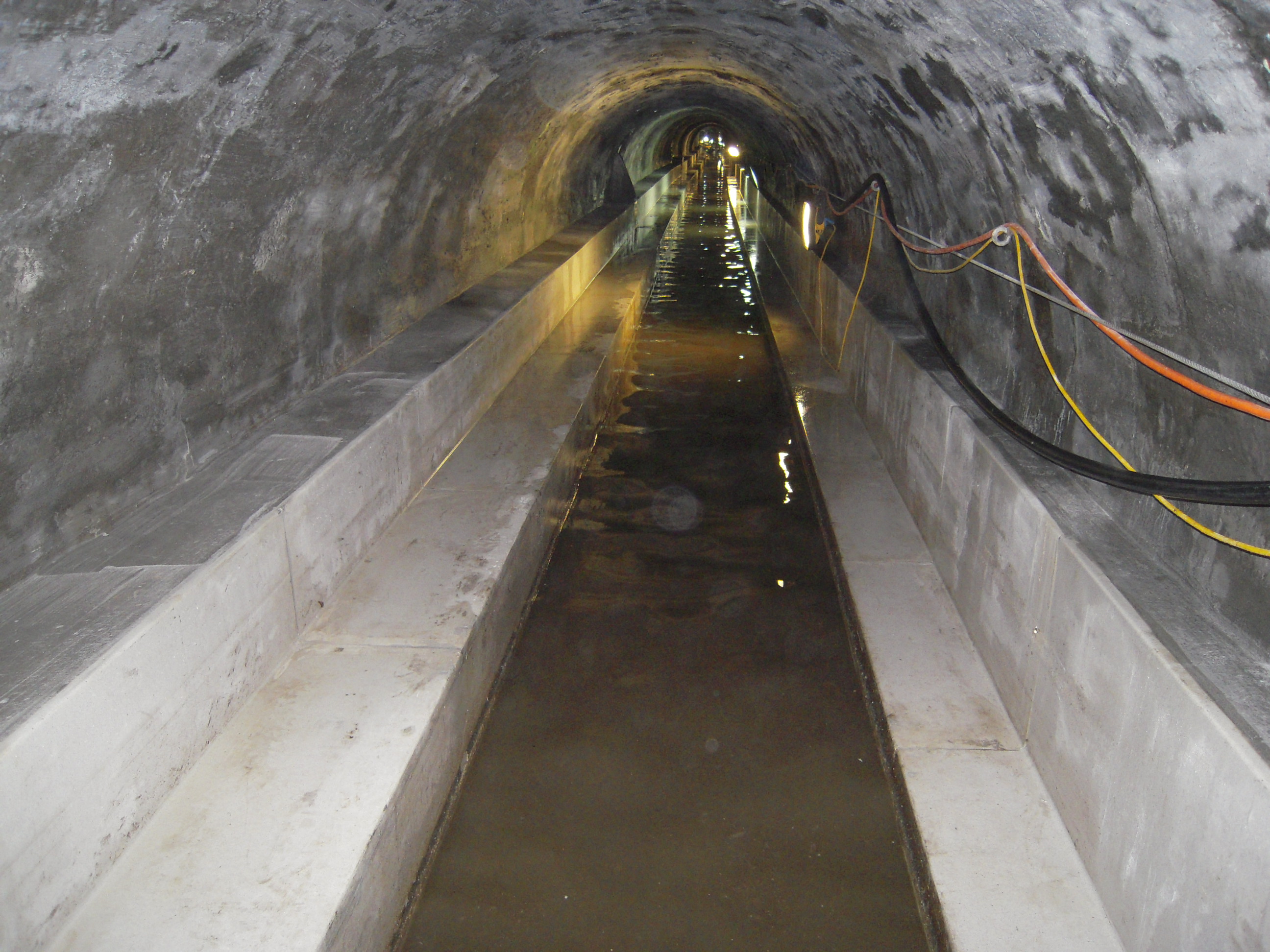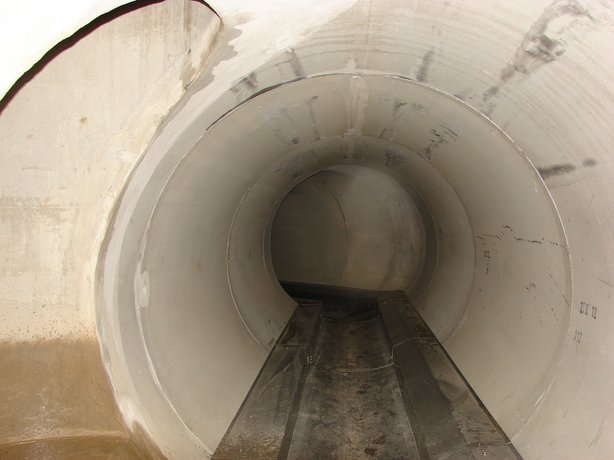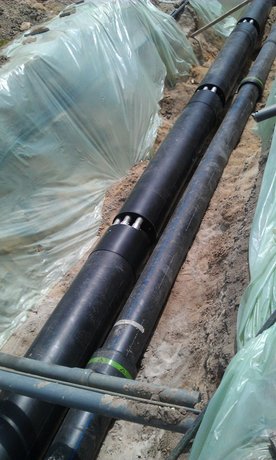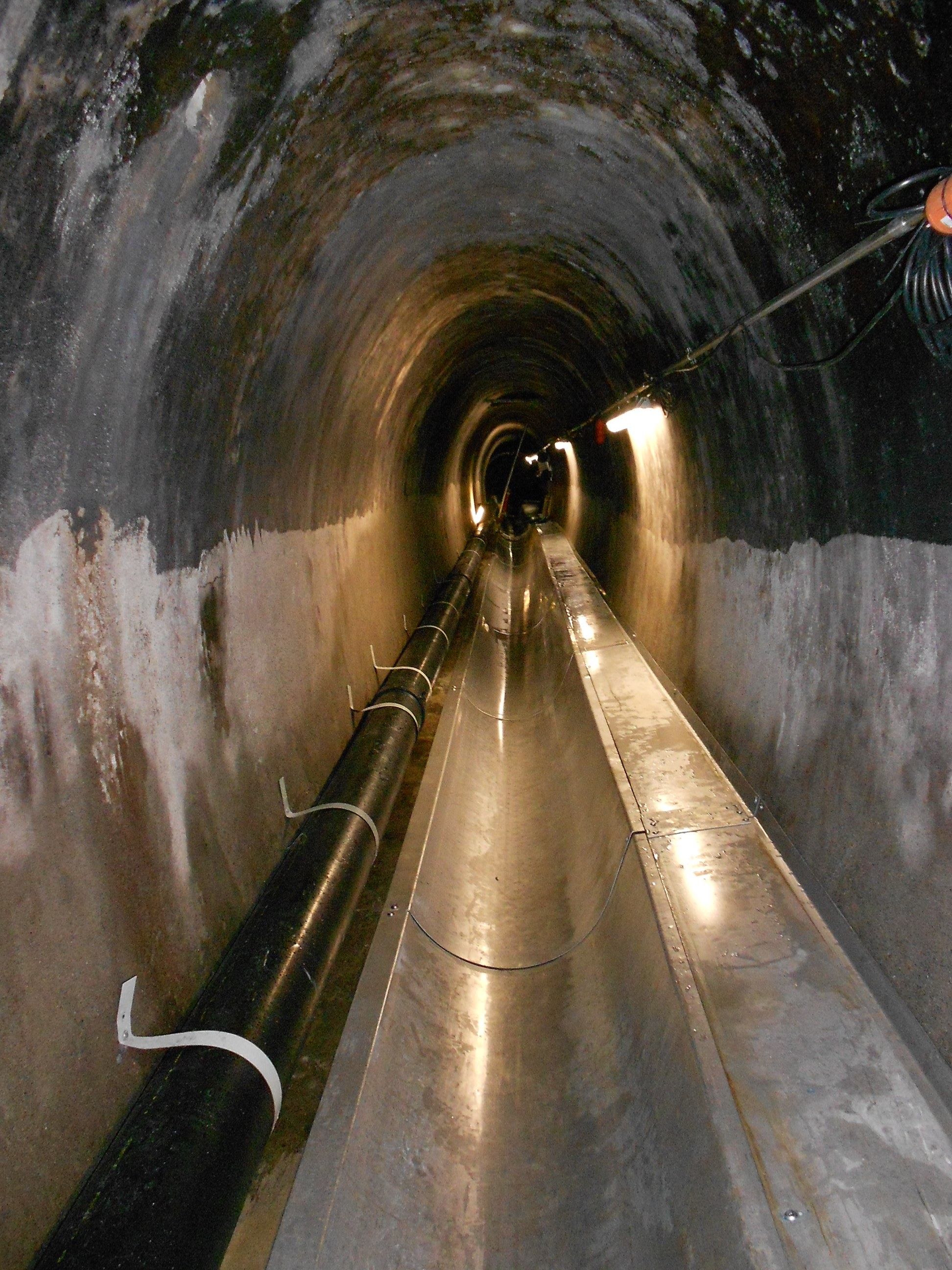Renewable energy
Utilisation of wastewater heat in the sewage canal, sewer, canalisation
Gold under our feet
The wastewater in the sewers is an ideal source of energy when combined with heat pumps and cooling machines, for heating and cooling of buildings. Per our experience, the minimal requirements for such a plant include:
- a wastewater flow of approx.. 10 l/s
- a wastewater temperature level of about 10°C
- a power requirement from 100kW (for heating and cooling from ca. 50kW).
During the course of conveying wastewater to the sewage treatment plant, there are many possibilities for exploiting thermal energy. Wastewater can also be used many times over consecutively as energy source. Despite new inflows, or the confluence into larger canals, but also through heat influx from cooling systems, the change in temperature of the wastewater is mostly marginal.
Innovative cities have ready energy guidelines (energy plans), based on which you can orient yourself to find out whether there is a suitable wastewater canal in your near vicinity (maximally approx. at a distance of 200 m). Get in touch with your city government!
Heat exchangers are installed in communal and industrial wastewater canals, sewers of very different cross-section geometry at a channel height of 0.8 m.
That is how apartment buildings, residential developments, communal buildings, hotels, thermal baths, swimming pools and industrial facilities are heated or cooled. A heating network system or energy contracting is recommended as a business model for high performance output.






